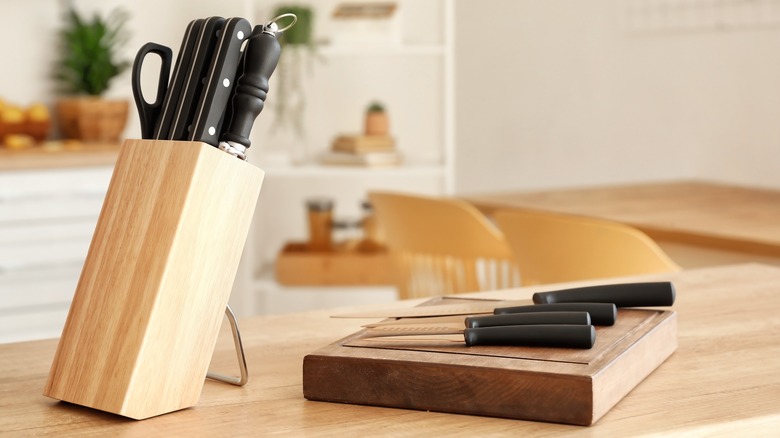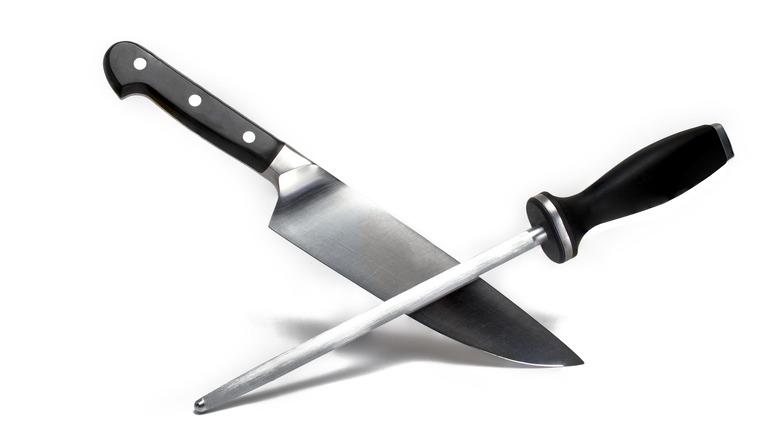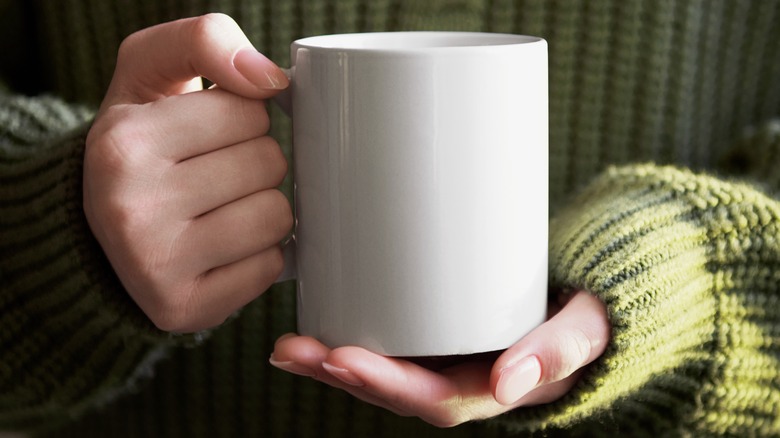The Unexpected Item You Can Use To Sharpen Any Kitchen Knife
Have you ever noticed when watching cooking shows that before professional chefs begin any prep work, they always hone their knives on a sharpening steel? There are some excellent reasons for this. As America's Test Kitchen explains, a knife with a fresh edge cuts with less effort and more precisely. This not only reduces fatigue and provides better-looking food but makes the knife safer to use.
It may sound counter-intuitive but dull blades are far more dangerous to use than sharp ones. Too often, people just run their knives through the dishwasher and then throw them in a drawer. They only think of sharpening them once the edge is completely gone. What's even worse is, at this point, honing a blade is no longer an option. You will have to sharpen it.
Hopefully, if you find yourself in this spot, you will have a set of wet stones handy and know how to use them. At a minimum, we hope you have a mechanical knife sharpener. If you don't, though, we have you covered. There is an item that virtually every kitchen in America has readily available that you can use to put a new edge on your cutting tools.
There is a differnce between honing and sharpening
Before we dive too deep, it's important to understand that honing a blade and sharpening it are two entirely different things. As Executive Chef Mike Garaghty explains in a video from Wüsthof Knives, when you hone a blade, you are realigning the small burrs or feathers that develop along the knife's edge with use. This is basically a smoothing operation that removes little or no metal. Chef Mike recommends that you hone your knives after every hour to an hour and a half of use.
Sharpening, though it may appear similar, is completely different. Where honing is simply maintaining the edge of your blade, sharpening it is more akin to rebuilding it. When you sharpen a knife, you are removing metal from the edge. You could think of it as grinding the blade by hand.
Needless to say, sharpening causes much more wear on a knife. Via an interview in Forbes, we find that Chef Mike recommends only resorting to sharpening a blade when honing will no longer freshen the edge and return its cutting ability. For most home chefs that could be once a year or less often. In professional kitchens, it would, of course, be more frequent.
An unexpected knife sharpener
Most chefs consider a good honing steel and knife sharpener both essential kitchen tools. Few people are culinary professionals, though, and many home cooks find themselves with a dull knife they need to sharpen and no sharpener at hand.
According to CNET, all you need to return the edge to a dulled blade is a ceramic coffee mug. Actually, any ceramic dish will work just as well, and the larger your working surface, the easier time you will have sharpening the knife. There is one key characteristic that you need to make sure your impromptu sharpener has. It must have an unglazed area where you can work the knife's edge. Via "An elementary guide to identifying ceramics" by David Cycleback, we learn that unglazed ceramics are easily identifiable by their lack of shiny finish and rough texture. For most modern ceramics, this will be the bottom ring.
To sharpen your knives, you will use the ring of your mug as you would any stone or sharpening steel. As explained by The Bearded Butchers, this involves holding your knife's edge at a twenty-degree angle to the sharpening surface and slowly dragging it from the heel to point across the cup.


